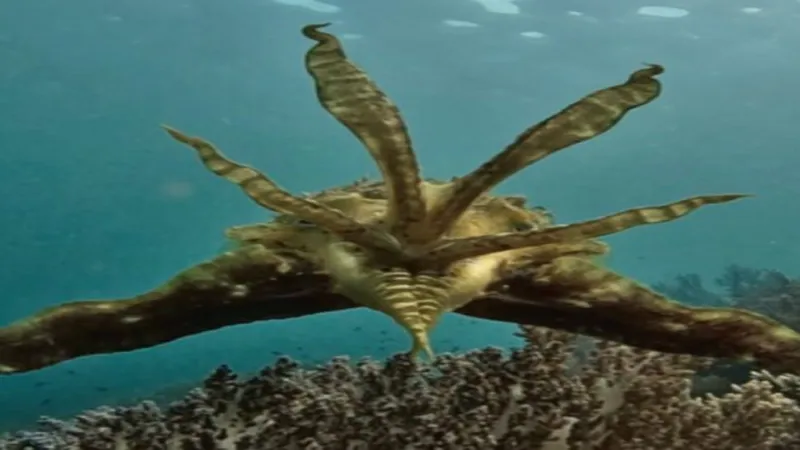
Cuttlefish Camouflage Strategies: Unique Hunting Displays
In the vibrant and often deceptive world of the ocean, cuttlefish stand out as masters of disguise, employing their remarkable camouflage skills to outsmart prey. A recent study published in the journal Ecology reveals the intricate techniques these crafty cephalopods use while hunting, from mimicking everyday ocean objects to employing dynamic color displays. As they adapt their hunting strategies based on their surroundings, cuttlefish showcase not just their stunning biological makeup but also a complex behavioral repertoire that challenges previous understanding. This exploration into their camouflage capabilities unveils the fascinating interplay between environment and instinct, setting the stage for a deeper dive into the science behind these captivating creatures.
| Display Name | Description | Color Change | Purpose | Frequency of Use |
|---|---|---|---|---|
| Leaf | Cuttlefish stretches its lateral arms horizontally and tucks others into a cone. | Turns olive-green. | Resembles a floating mangrove leaf to approach prey slowly. | Most commonly used. |
The Amazing World of Cuttlefish Camouflage
Cuttlefish are fascinating creatures, known for their incredible ability to blend into their surroundings. They use their amazing camouflage skills to hunt for food and avoid predators. By changing the colors and patterns of their skin, cuttlefish can mimic objects like leaves or coral, making them virtually invisible in the ocean. This clever trick helps them sneak up on their prey without being noticed, showcasing just how crafty these animals can be.
Recent research has shown that cuttlefish can create different camouflage displays based on their environment. For instance, they may display dark stripes or take on the appearance of a floating leaf while hunting. This ability to adapt their appearance demonstrates their intelligence and remarkable skill in the wild. Understanding how cuttlefish camouflage themselves gives us insight into their survival tactics and the complexity of their behavior.
Frequently Asked Questions
What unique abilities do cuttlefish have for camouflage?
Cuttlefish can rapidly change their skin color and texture to blend with their surroundings, using specialized cells called chromatophores, iridophores, and leucophores.
How do cuttlefish change their skin color?
Cuttlefish change color through muscle contractions that expand or shrink pigment cells called chromatophores, allowing them to absorb or reflect light in various ways.
What are the different camouflage displays used by cuttlefish?
Cuttlefish use displays like ‘Leaf’, ‘Branching Coral’, ‘Passing Stripe’, and ‘Pulse’ to blend in with their environment while hunting.
Why is cuttlefish camouflage behavior complex?
Cuttlefish adapt their camouflage patterns dynamically, adjusting to different backgrounds and using feedback to correct their displays during transformations.
What role do leucophores play in cuttlefish camouflage?
Leucophores scatter light across the spectrum, allowing cuttlefish to appear white or transparent, enhancing their ability to blend in with various environments.
How do cuttlefish choose their hunting displays?
Cuttlefish select their hunting displays based on the environment, using different strategies for effective camouflage while pursuing prey.
What did recent studies reveal about cuttlefish behavior?
Recent research shows cuttlefish exhibit more varied hunting strategies in the wild than in captivity, suggesting adaptability in their behavior.
Summary
Cuttlefish are remarkable hunters that use different camouflage techniques to catch their prey, as highlighted in a recent study published in Ecology. They can mimic ocean objects like leaves and corals, and change their skin color quickly thanks to special cells called chromatophores and iridophores. Scientists found that cuttlefish adapt their camouflage depending on their environment, using four main displays: the Leaf display, Branching Coral display, Passing Stripe display, and Pulse display. Each technique helps them blend in and approach prey effectively, showcasing their cleverness and adaptability in the wild.